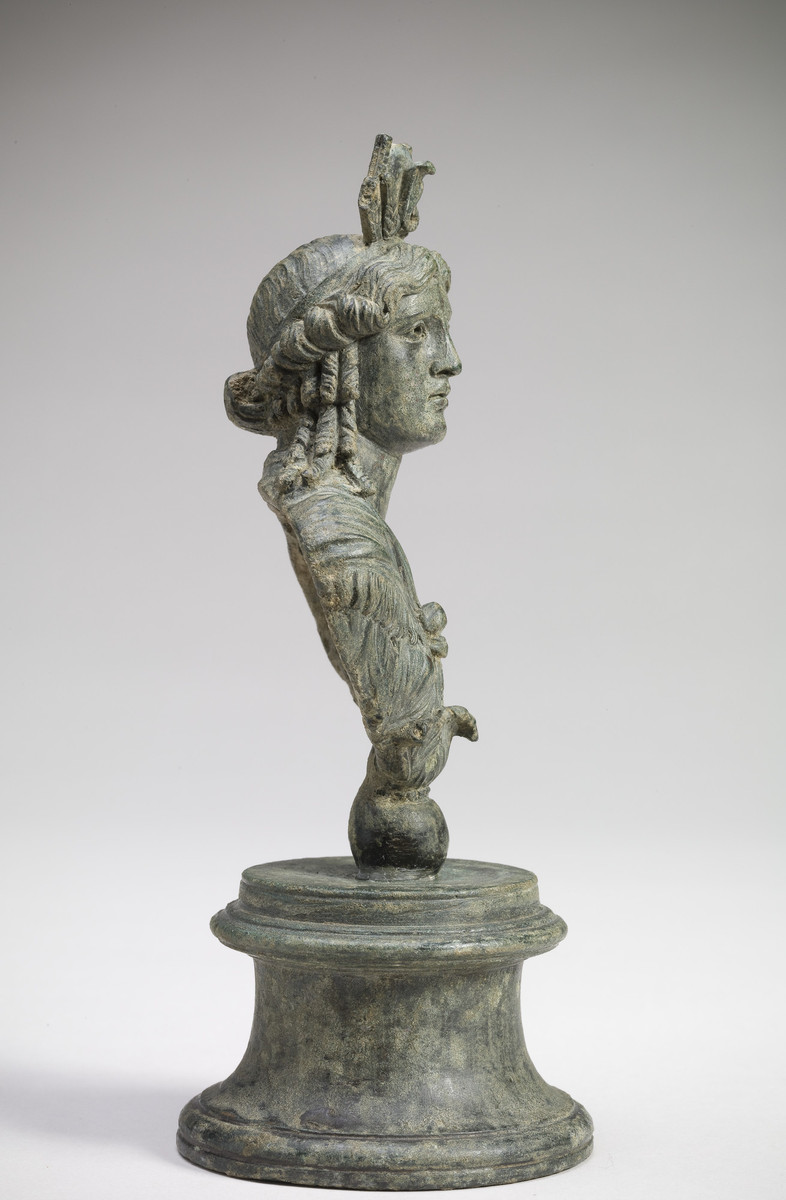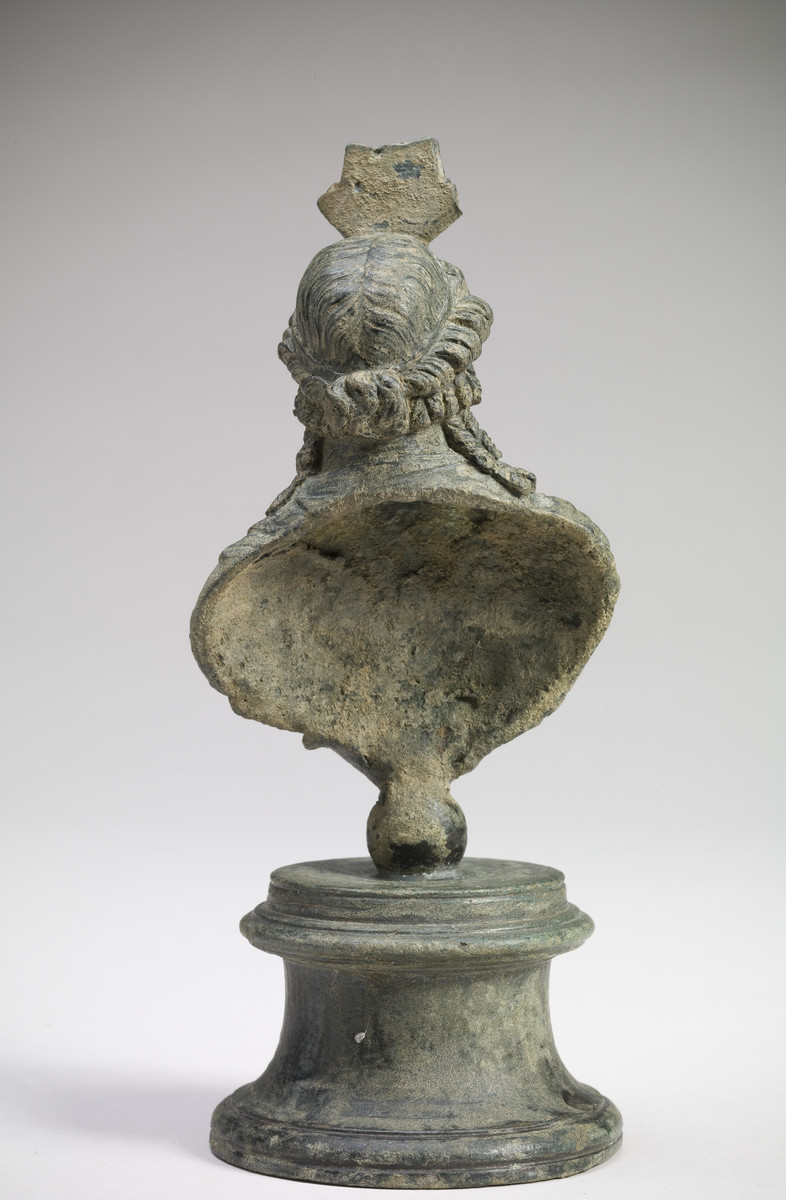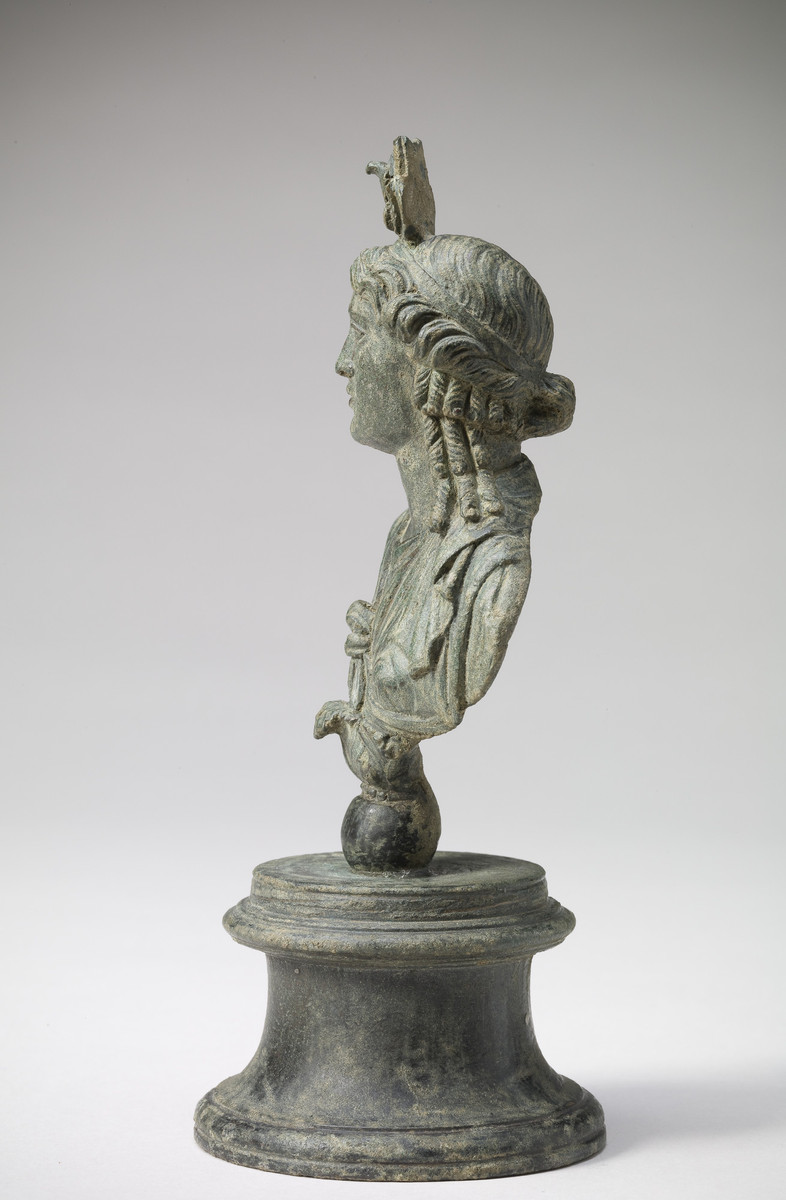On View
Unknown
Roman
Place made: Europe; Italy
Bust of Isis, 2nd century CE (Hadrianic period, 117-138 CE)
Overall: 4 1/2 in x 2 5/8 in x 1 3/8 in; 11.4 cm x 6.7 cm x 3.5 cm
Purchase with the Nancy Everett Dwight Fund and the Psi Omega Society Fund in honor of Mary Gilmore Williams (Class of 1885)
MH 1965.10.C.G

 GIVE
GIVE


